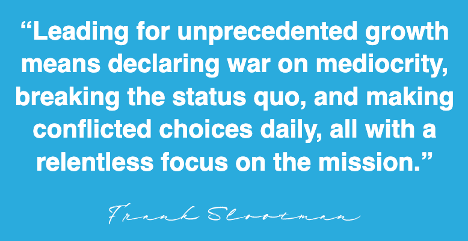
By Jerry Locke, Snowflake Delivery Lead
At Paradigm we pride ourselves on being agnostic. We help you not only decide the best platform to build your cloud foundation but also help your team leverage it. While these platforms’ capabilities are very well documented, our focus here is on the factor of cost or – as we discuss often as a Snowflake partner – consumption.
Snowflake’s approach is focused on driving customers to consumption. Customer success is the fabric of what we are building at Paradigm and having customers see Snowflake success is critical. Frank Slootman, Snowflake’s CEO, published a book called Amp It Up and one of the many things I took away from it that I can impart to you, the customer, is this:

So, in typical Slootman fashion let’s speak to the elephant in the room here: Snowflake makes money on your consumption. So why would Snowflake have a vested interest in saving you, the customer money? My answer is like as it is at Paradigm, it is about you, the customer. The most recent example of this is in Snowflake’s 2022 Q4 recent stock hit as “Executives said engineers have been rolling out efficiency improvements to the company’s software that have lowered consumption of customers credits”. While the focus has been on revenue, it is not at the sacrifice of you, the customers. That is the best proof – the kind that hits your wallet… in a good way!
With this relentless focus on you, the Snowflake customer, let us circle back to consumption. When you become a customer, the cost of storage pales in comparison to the cost of consumption. Consumption can be understood as the compute engine that powers your workload. You can enable any number of “virtual data warehouses”, which are effectively, the compute engines that power query execution. Virtual data warehouses are available in eight “T-shirt” style sizes: X-Small, Small, Medium, Large, and X- to 4X-Large. These sizes are growing as well however, each data warehouse size has a compute credit designation. As you go up in size, credits usage will vary.

Smart Consumption with Paradigm
Paradigm’s approach to “smart” consumption is a “no pain, no gain approach” that allows your team to understand how this consumption narrative starts and speaks to your entire organization. We call it “smart” because just like your smart phone, smart watch, or like how a Tesla is to a combustion engine, it requires you to understand, plan and know your usage patterns. The more you plan the better you off you will be!
Anytime you embark on a cloud journey there are 3 drivers to mold your decisions. They are (in order of importance) your people, your process, and your technology. As a Snowflake customer, you should and will challenge the first two (people and process) naturally through your data evolution. However, regardless of scale and urgency to power your data evolution, the cloud consumption of your Snowflake account should follow these general steps.
- Tag objects and/or allocate your cloud sources: Snowflake tagging is used to tag sensitive data (e.g. PII, Secret). However, it can be used for metadata so analysts can quickly identify resources that consume your Snowflake consumption. It is a great starting point that can and should be leveraged in your Snowflake account.
- Know your workloads: One of the lost arts of data warehouse consumption is to really define your workloads. For the ones as old as I am and have seen the data evolution from ETL vs ELT, you will observe that the elasticity of the cloud is not a hyperbole. Cloud consumption is a game changer and knowing your workloads is essential for true ROI.
- Bill back or identify ROI: Now the real fun begins! With the first 2 steps completed (tagging and knowing your workloads) the easy technical job of reporting begins. Paradigm’s Snowflake Data Consumption Optimization puts this important initiative into play. ROI does not have to live in your organization as a measurement for finance – through these steps it can be applied to your Snowflake account.
Consumption can be a complicated issue when compared to the traditional license models we have grown accustomed to in the data warehouse space. In the past, we had to consider “per license” fees, and licensing audits can be costly – on both time and money. With Snowflake, the model has changed in that anyone (yes anyone) can get access. You are only charged for consumption used with a small cost for data storage. Understanding your workloads is the key driver here. Then associating it to the business outcomes is what we have seen propel companies forward. How can Paradigm help you start, continue, or enable your consumption with the knowledge of where you are spending it? Let’s find out!
**
My former colleagues have some great articles on this topic as well:
- Consumption-based Pricing by Chris Degnan, Chief Revenue Officer at Snowflake
- Why CFOs Should Champion the Consumption Business Model by Mike Scarpelli, Chief Financial Officer at Snowflake
- Sales Compensation in a Consumption Pricing World by Andrew Straus, VP of Sales Strategy & Planning at Snowflake
